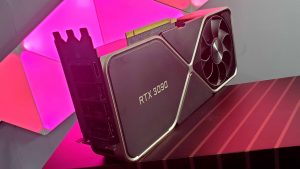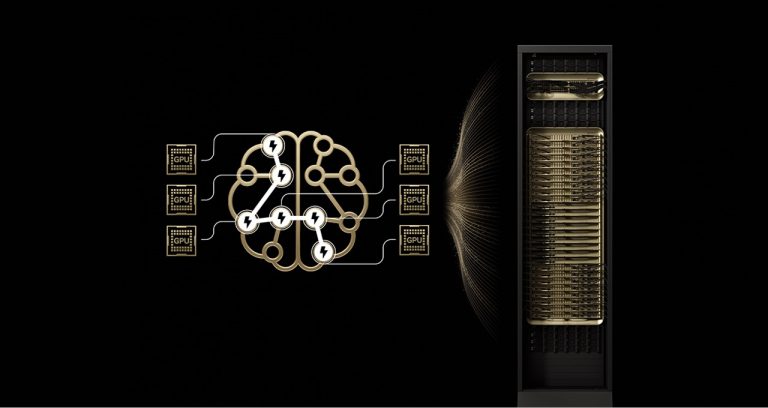More than 90 million new vehicles are introduced to roads across the globe every year, leading to an annual 12% increase in traffic congestion — according to NoTraffic, a member of the NVIDIA Inception program for cutting-edge startups and the NVIDIA Metropolis vision AI ecosystem.
Still, 99% of the world’s traffic signals run on fixed timing plans, leading to unnecessary congestion and delays.
To reduce such inefficiencies, mitigate car accidents and reduce carbon emissions from vehicles, NoTraffic’s AI Mobility platform predicts road scenarios, helps ensure continuous traffic flow, minimizes stops and optimizes safety at intersections across the U.S., Canada and elsewhere.
The platform — which enables road infrastructure management at both local-intersection and city-grid scale — integrates NVIDIA-powered software and hardware at the edge, under a cloud-based operating system.
It’s built using the NVIDIA Jetson edge AI platform, NVIDIA accelerated computing and the NVIDIA Metropolis vision AI developer stack.
“With NVIDIA accelerated computing, we achieved a 3x speedup in AI training and doubled AI Mobility’s energy efficiency,” said Uriel Katz, cofounder and chief technology officer of NoTraffic. “These optimizations in time, money and energy efficiency are all bolstered by NVIDIA Jetson, which sped our image preprocessing tasks by 40x compared with a CPU-only workflow. Plus, GPU-accelerated NVIDIA CUDA libraries increased our model throughput by 30x.”
These libraries include the NVIDIA TensorRT ecosystem of application programming interfaces for high-performance deep learning inference and the NVIDIA cuDNN library of primitives for deep neural networks.
Taming Traffic in Tuscon, Vancouver and Beyond
In Tuscon, Arizona, more than 80 intersections are tapping into the NoTraffic AI Mobility platform, which has enabled up to a 46% reduction in road delays during rush hours — and a half-mile reduction in peak queue length.
The work is an expansion of NoTraffic’s initial deployment on Tuscon’s West Ajo Way. That effort led to an average delay reduction of 23% for drivers.
Since installation, NoTraffic technology has helped free Tucson drivers from over 1.25 million hours stuck in traffic, the company estimates, representing an economic benefit of over $24.3 million. The company has also tracked a nearly 80% reduction in red-light runners since its platform was deployed, helping improve safety at Tucson intersections.
By reducing travel times, drivers have also saved over $1.6 million in gas, cutting emissions and improving air quality to make the equivalent impact of planting 650,000 trees.
In Vancouver, Canada, the University of British Columbia (UBC) is using the NoTraffic platform and Rogers Communications’ 5G-connected, AI-enabled smart-traffic platform to reduce both pedestrian delays and greenhouse gas emissions.
Rogers Communications’ 5G networks provide robust and stable connectivity to the sensors embedded on the traffic poles.
This advanced network infrastructure enhances the NoTraffic platform’s efficacy and scalability, as the improved speed and reduced latency of 5G networks means traffic data can be processed in real time. This is critical for predicting numerous potential traffic scenarios, adjusting signal timings and prioritizing road users accordingly.
With AI Mobility deployed at seven intersections across the campus, the university experienced an up to 40% reduction in pedestrian delays and significant decreases in vehicle wait time.
In addition, UBC reduces 74 tons of carbon dioxide emissions each year thanks to the NoTraffic and Rogers solution, which is powered by NVIDIA edge AI and accelerated computing.
The platform is also in action on the roads of Phoenix, Arizona; Baltimore, Maryland; and in 35 states through 200+ agencies across the U.S. and Canada.
Honk If You Love Reducing Congestion, Carbon Emissions
The NoTraffic AI Mobility platform offers local AI-based predictions that, based on sensor inputs at multiple intersections, analyze numerous traffic scenarios up to two minutes in advance.
It can adapt to real-time changes in traffic patterns and volumes, send messages between intersections and run optimization algorithms that control traffic signals to improve overall transportation efficiency and safety through cloud connectivity.
Speedups in the AI Mobility platform mean quicker optimizations of traffic signals — and reduced congestion on the roads means reduced carbon emissions from vehicles.
NoTraffic estimates that for every city optimized with this platform, eight hours of traffic time could be saved per driver. Plus, with over 300,000 signalized intersections in the U.S., the company says this could result in a total of $14 billion in economic savings per year.
Learn more about the NVIDIA Metropolis platform and how it’s used in smart cities and spaces.











